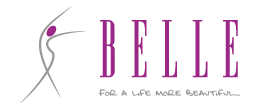Current Treatments of Acne: Medications, Lights, Lasers, and a Novel 650-Microsecond 1064nm Nd: YAG Laser
Current Treatments of Acne: Medications, Lights, Lasers, and a Novel 650-Microsecond 1064nm Nd: YAG Laser
Michael Gold, MD, David J. Goldberg, MD, JD, Mark Nestor, MD, PhD Journal of Cosmetic Dermatology, September 2017, Volume 16, Issue 3
Summary
The treatment of acne, especially severe acne, remains a challenge to dermatologists. Therapies include retinoids, antibiotics, hormones, lights, lasers, and various combinations of these modalities. Acne is currently considered a chronic rather than an adolescent condition. The appropriate treatment depends on the patient and the severity of disease. The purpose of this study was to review current therapies for acne of all [...]
Michael Gold, MD, David J. Goldberg, MD, JD, Mark Nestor, MD, PhD
Journal of Cosmetic Dermatology, September 2017, Volume 16, Issue 3
Summary
The treatment of acne, especially severe acne, remains a challenge to dermatologists. Therapies include retinoids, antibiotics, hormones, lights, lasers, and various combinations of these modalities. Acne is currently considered a chronic rather than an adolescent condition. The appropriate treatment depends on the patient and the severity of disease. The purpose of this study was to review current therapies for acne of all severities and to introduce the 650-ls 1064-nm laser for the treatment of acne.
1 | INTRODUCTION
Acne vulgaris is the most frequent reason that people consult a der- matologist.1 Acne affects 85% to 90% of teenagers,2 children aged 7-12 years,3 and adult men and women, including those with skin of color.4,5 Among adults who have acne, 64% are in their 20s and 43% are in their 30s. Prevalence is higher among women than men.6-8
Gollnick et al.9 and the Global Alliance to Improve Outcomes in Acne10 have suggested that acne be considered a chronic disease rather than a “simple, self-limiting affliction of adolescents”. This assertion is based on the known characteristics of a chronic disease: an extended course, recurrence or relapse, slow onset or acute outbreaks, and negative effects on quality of life. Acne persists into adulthood in up to 50% of affected patients and has negative sequelae such as anxiety and depression, social withdrawal, scars, and persistent hyperpigmentation.10
2 | PATHOGENESIS OF ACNE
Acne is a multifactorial disease of the pilosebaceous unit. The development of acne lesions has been attributed to four pathogenic factors: androgen-induced overproduction of sebum, colonization of the pilosebaceous duct by Propionibacterium acnes, abnormal
keratinization in the follicle, and discharge of inflammatory mediators into the skin.8 The first stage is the development of a microcomedone in the pilosebaceous unit. This is a plug that forms because of increased production of sebum and keratinocytes that line the hair follicle. Accumulation of sebum and sloughed keratinocytes results in the formation of larger, visible comedones. At the same time, P. acnes colonizes the pilosebaceous duct, triggering the release of inflammatory mediators into the surrounding tissue and a response by immunocompetent cells, further contributing to the development of comedones.8,11 Acne most often occurs in the face, neck, back, and chest, all areas with many pilosebaceous units.12,13
3 | TREATMENT OF ACNE
The traditional monotherapies for mild to moderate acne are topical retinoids and antimicrobial agents such as antibiotics and benzoyl peroxide (BPO).
3.1 | Retinoids
Members of the Global Alliance10 state that retinoids should be considered the basis for treatment of all acne patients except those with the most severe disease. Topical retinoids (e.g, tretinoin, tazarotene, adapalene) help to normalize the abnormal differentiation and
Gold M, Goldberg DJ, Nestor MS. Current treatments of acne: Medications, lights, lasers, and a novel 650-μs 1064-nm Nd: YAG laser. J Cosmet Dermatol. 2017;16:303–318. https://doi.org/10.1111/jocd.12367







